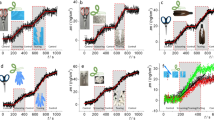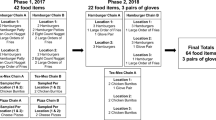Abstract
This work focuses on the mass content of plasticizers in children’s backpacks and toys, and their mass transfer from product surfaces to cotton wipes. The mass content of plasticizers in six backpacks and seven toys was measured by extracting them in tetrahydrofuran. Bis(2-ethylhexyl) terephthalate (DEHT) was the most common plasticizer, dominating the composition of plasticizers in four backpacks (average mass content in product polyvinyl chloride, 5.38±1.98%–25.5±3.54%) and six plastic toys (8.17±1.85%–21.2±1.11%). The surface of each product was wiped with three dry and three wet (by isopropanol) cotton wipes, so as to evaluate the mass transfer of plasticizers to clothing and human skin, respectively. DEHT was the most common plasticizer detected on wipe samples. There were strong correlations (backpacks r=0.90; plastic toys r=0.96) between average mass transfer of DEHT to wet wipes and its average mass content in the product. The mass transfers of the five dominant plasticizers in one backpack to both dry and wet wipes were also correlated (both r=1.00) with their mass contents. These results suggest that the mass transfer of plasticizers from products to clothing or human skin is strongly associated with their mass content.
This is a preview of subscription content, access via your institution
Access options
Subscribe to this journal
Receive 6 print issues and online access
$259.00 per year
only $43.17 per issue
Buy this article
- Purchase on Springer Link
- Instant access to full article PDF
Prices may be subject to local taxes which are calculated during checkout



Similar content being viewed by others
References
Earls AO, Axford IP, Braybrook JH . Gas chromatography–mass spectrometry determination of the migration of phthalate plasticisers from polyvinyl chloride toys and childcare articles. J Chromatogr A 2003; 983: 237–246.
Pérez-Feás C, Barciela-Alonso M, Sedes-Díaz A, Bermejo-Barrera P . Phthalates determination in pharmaceutical formulae used in parenteral nutrition by LC-ES-MS: importance in public health. Anal Bioanal Chem 2010; 397: 529–535.
Gimeno P, Thomas S, Bousquet C, Maggio A-F, Civade C, Brenier C et al. Identification and quantification of 14 phthalates and 5 non-phthalate plasticizers in PVC medical devices by GC–MS. J Chromatogr B 2014; 949–950: 99–108.
Xu Y, Liu Z, Park J, Clausen PA, Benning JL, Little JC . Measuring and predicting the emission rate of phthalate plasticizer from vinyl flooring in a specially-designed chamber. Environ Sci Technol 2012; 46: 12534–12541.
Radaniel T, Genay S, Simon N, Feutry F, Quagliozzi F, Barthélémy C et al. Quantification of five plasticizers used in PVC tubing through high performance liquid chromatographic-UV detection. J Chromatogr B 2014; 965: 158–163.
Coltro L, Pitta JB, da Costa PA, Fávaro Perez MÂ, de Araújo VA, Rodrigues R . Migration of conventional and new plasticizers from PVC films into food simulants: a comparative study. Food Control 2014; 44: 118–129.
Little JC, Weschler CJ, Nazaroff WW, Liu Z, Cohen Hubal EA . Rapid methods to estimate potential exposure to semivolatile organic compounds in the indoor environment. Environ Sci Technol 2012; 46: 11171–11178.
Colon I, Caro D, Bourdony CJ, Rosario O . Identification of phthalate esters in the serum of young Puerto Rican girls with premature breast development. Environ Health Perspect 2000; 108: 895–900.
Melnick RL . Is peroxisome proliferation an obligatory precursor step in the carcinogenicity of di(2-ethylhexyl)phthalate (DEHP)? Environ Health Perspect 2001; 109: 437–442.
Casals-Casas C, Desvergne B . Endocrine disruptors: from endocrine to metabolic disruption. Annu Rev Physiol 2011; 73: 135–162.
Lioy PJ, Hauser R, Gennings C, Koch HM, Mirkes PE, Schwetz BA et al. Assessment of phthalates/phthalate alternatives in children's toys and childcare articles: review of the report including conclusions and recommendation of the Chronic Hazard Advisory Panel of the Consumer Product Safety Commission. J Expos Sci Environ Epidemiol 2015; 25: 343–353.
European Food Safety Authority (EFSA). Opinion of the scientific panel on food additives, flavourings, processing aids and materials in contact with food (AFC) on a request related to a 12th list of substances for food contact materials. EFSA J 2006; 395–401: 1–21.
National Industrial Chemicals Notification and Assessment Scheme (NICNAS). Full public report: 1,2-Cyclohexanedicarboxylic acid, 1,2-diisononyl ester (‘Hexamoll DINCH’). Available at http://www.nicnas.gov.au/__data/assets/word_doc/0003/6699/EX170FR.docx.
Bhat VS, Durham JL, Ball GL, English JC . Derivation of an oral reference dose (RfD) for the nonphthalate alternative plasticizer 1,2-cyclohexane dicarboxylic acid, di-isononyl ester (DINCH). J Toxicol Environ Health, Part B 2014; 17: 63–94.
Wirnitzer U, Rickenbacher U, Katerkamp A, Schachtrupp A . Systemic toxicity of di-2-ethylhexyl terephthalate (DEHT) in rodents following four weeks of intravenous exposure. Toxicol Lett 2011; 205: 8–14.
U.S. Consumer Product Safety Improvement Act (CPSIA). Public Law 110-314-August 14, 2008, Washington, DC. Available at http://www.cpsc.gov/cpsia.PdfS.
Babich MA . Review of Exposure and Toxicity Data for Phthalate Substitutes. US Consumer Product Safety Commission: Bethseda, MA, USA, 2010.
Weschler CJ, Nazaroff WW . SVOC exposure indoors: fresh look at dermal pathways. Indoor Air 2012; 22: 356–377.
Clausen PA, Spaan S, Brouwer DH, Marquart H, le Feber M, Engel R et al. Experimental estimation of migration and transfer of organic substances from consumer articles to cotton wipes: evaluation of underlying mechanisms. J Expos Sci Environ Epidemiol 2015 (e-pub ahead of print 20 May 2015; doi:10.1038/jes.2015.35).
Stapleton HM, Kelly SM, Allen JG, McClean MD, Webster TF . Measurement of polybrominated diphenyl ethers on hand wipes: estimating exposure from hand-to-mouth contact. Environ Sci Technol 2008; 42: 3329–3334.
Gong M, Zhang Y, Weschler CJ . Measurement of phthalates in skin wipes: estimating exposure from dermal absorption. Environ Sci Technol 2014; 48: 7428–7435.
Keller AS, Raju NP, Webster TF, Stapleton HM . Flame retardant applications in camping tents and potential exposure. Environ Sci Technol Lett 2014; 1: 152–155.
Liang Y, Xu Y . Improved method for measuring and characterizing phthalate emissions from building materials and its application to exposure assessment. Environ Sci Technol 2014; 48: 4475–4484.
Liang Y, Xu Y . Emission of phthalates and phthalate alternatives from vinyl flooring and crib mattress covers: the influence of temperature. Environ Sci Technol 2014; 48: 14228–14237.
Boor BE, Liang Y, Crain NE, Järnström H, Novoselac A, Xu Y . Identification of phthalate and alternative plasticizers, flame retardants, and unreacted isocyanates in infant crib mattress covers and foam. Environ Sci Technol Lett 2015; 2: 89–94.
Silva MJ, Jia T, Samandar E, Preau JL, Jr, Calafat AM . Environmental exposure to the plasticizer 1,2-cyclohexane dicarboxylic acid, diisononyl ester (DINCH) in US adults (2000—2012). Environ Res 2013; 126: 159–163.
Alexander BM, Baxter CS . Plasticizer contamination of firefighter personal protective clothing – a potential factor in increased health risks in firefighters. J Occup Environ Hyg 2014; 11: D43–D48.
Sugiura K, Sugiura M, Hayakawa R, Shamoto M, Sasaki K . A case of contact urticaria syndrome due todi(2-ethylhexyl) phthalate (DOP) in work clothes. Contact Dermatitis 2002; 46: 13–16.
Clausen PA, Liu Z, Kofoed-Sørensen V, Little J, Wolkoff P . Influence of temperature on the emission of di-(2-ethylhexyl)phthalate (DEHP) from PVC flooring in the emission cell FLEC. Environ Sci Technol 2012; 46: 909–915.
Clausen PA, Liu Z, Xu Y, Kofoed-Sørensen V, Little JC . Influence of air flow rate on emission of DEHP from vinyl flooring in the emission cell FLEC: measurements and CFD simulation. Atmos Environ 2010; 44: 2760–2766.
Ekelund M, Azhdar B, Gedde UW . Evaporative loss kinetics of di(2-ethylhexyl)phthalate (DEHP) from pristine DEHP and plasticized PVC. Polym Degrad Stab 2010; 95: 1789–1793.
Till DE, Reid RC, Schwartz PS, Sidman KR, Valentine JR, Whelan RH . Plasticizer migration from polyvinyl chloride film to solvents and foods. Food Chem Toxicol 1982; 20: 95–104.
Crank J . Infinite and semi-infinite media. In: Crank J (ed). The Mathematics of Diffusion, 2nd edn. Clarendon Press: Oxford, UK, 1975, pp 32–40.
Piringer OG . Evaluation of plastics for food packaging. Food Addit Contam 1994; 11: 221–230.
Marcilla A, Garcia S, Garcia-Quesada JC . Migrability of PVC plasticizers. Polym Test 2008; 27: 221–233.
Acknowledgements
Although this research has been funded wholly by the US Environmental Protection Agency's STAR program through grant 83560601, it has not been subjected to any EPA review and therefore does not necessarily reflect the views of the Agency, and no official endorsement should be inferred.
Author information
Authors and Affiliations
Corresponding author
Ethics declarations
Competing interests
The authors declare no conflict of interest.
Additional information
Supplementary Information accompanies the paper on the Journal of Exposure Science and Environmental Epidemiology website
Supplementary information
Rights and permissions
About this article
Cite this article
Xie, M., Wu, Y., Little, J. et al. Phthalates and alternative plasticizers and potential for contact exposure from children’s backpacks and toys. J Expo Sci Environ Epidemiol 26, 119–124 (2016). https://doi.org/10.1038/jes.2015.71
Received:
Revised:
Accepted:
Published:
Issue Date:
DOI: https://doi.org/10.1038/jes.2015.71
Keywords
This article is cited by
-
Association between urinary phthalate metabolites and chronic obstructive pulmonary disease incidence in US adults: results from NHANES 2007–2018
Environmental Science and Pollution Research (2023)
-
Hazardous chemicals in outdoor and indoor surfaces: artificial turf and laminate flooring
Journal of Exposure Science & Environmental Epidemiology (2022)
-
Detection of deterioration for biochemical substances used with Late Period mummy by GC-MS
Archaeological and Anthropological Sciences (2021)
-
Human sex hormone-binding globulin as a potential target of alternate plasticizers: an in silico study
BMC Structural Biology (2016)



